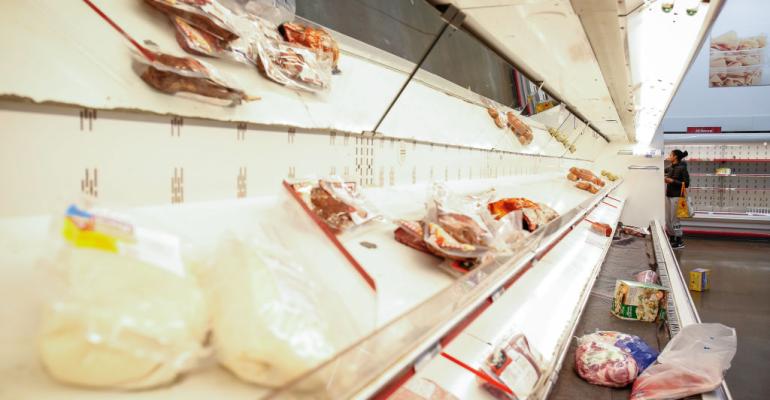Between August 2021 and August 2022, shoppers experienced the largest annual percentage increase in grocery food prices since the 1980s. Those living in Dallas-Fort Worth and Detroit were slammed at the checkout line the hardest.
The U.S. Government Accountability Office’s Food Prices: Information on Trends, Factors and Federal Roles revealed for a year the increase was around 11%. On average, the annual rate is about 2%.
Detroit ranked No. 1 with a 14.49% spike, followed by Dallas-Fort Worth at 14.03%. The Fort Lauderdale/Miami area was the lowest at just over 5%. Philadelphia (13.63%), Houston (12.57%), Minneapolis-St. Paul (12.52%), Seattle-Tacoma-Bellevue (12.08%), San Francisco (11.99%), Atlanta (11.35%), St. Louis (11.28), San Diego (11.25%), and Denver (11.10%) also eclipsed the national average of about 11% from August 2021 to August 2022. Los Angeles (10.65%), Chicago (10.6%), New York City (10.19%), and Boston (10.04%) were lower than the national mark.
Between 2013-2022 food prices increase averages were highest in Hawaii and San Francisco at around 3.1%, while they were the lowest in Miami-Fort Lauderdale and Minneapolis-St. Paul at 1.8%.
The USDA and other experts interviewed by the U.S. Government Accountability Office said the following factors led to the historic rise in 2021 and 2022: the COVID-19 pandemic, increased consumer demand, droughts in 2021, the highly pathogenic Avian influenza virus outbreak in 2022, and the Russian-Ukraine conflict. Prices increased in wheat, corn, and soybeans, which were already experiencing global shortages. An insect-borne plant disease that impairs a tree’s ability to produce fruit and eventually kills it has been reducing citrus yields in a number of states since 2005, which also has impacted food pricing.
Federal agencies executed a number of actions to help de-accelerate the rise between 2021 and 2022, including:
In response to price increases for fertilizer, the USDA provided funding to agricultural producers to help expand the manufacturing and processing of fertilizer and nutrient alternatives, and the agency expanded double crop insurance opportunities to help increase domestic food production
- The FDA allowed producers to make minor changes to ingredients without updating labeling when ingredient shortages required the use of substitutes
- The USDA provided grant funding to help meat and poultry processors to expand operations
- The U.S. DOT and USDA worked together to reduce increased congestion at U.S. agricultural export terminals due to COVID-19 supply chain disruptions that left fewer shipping containers available at shipping ports
- The FDA used regulatory flexibilities to allow producers to divert food meant for restaurant consumption to grocery stores.
- The FTC launched an inquiry into supply chain disruptions and ordered nine large retailers, wholesalers and consumer good suppliers to provide detailed information that will help the FTC understand the causes of supply chain disruptions.





